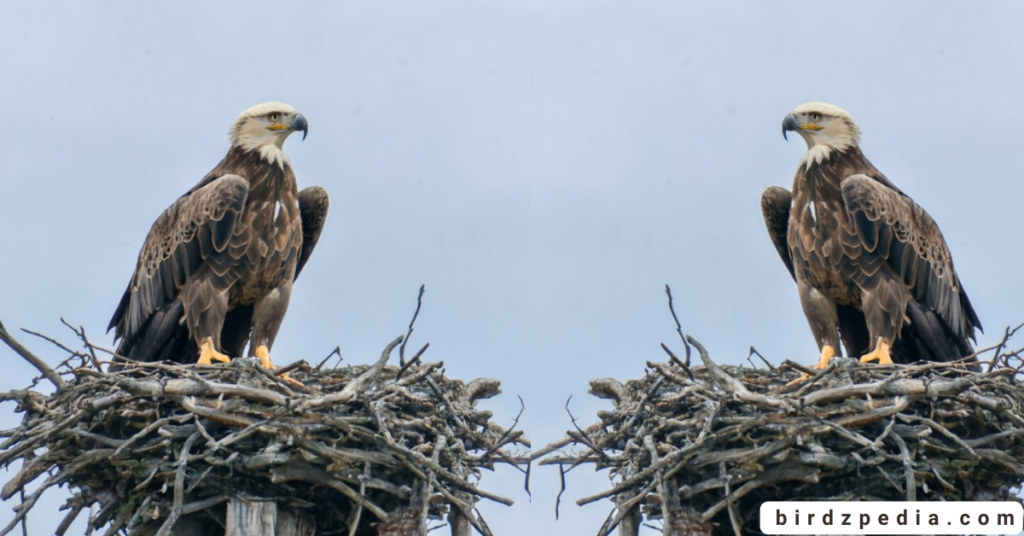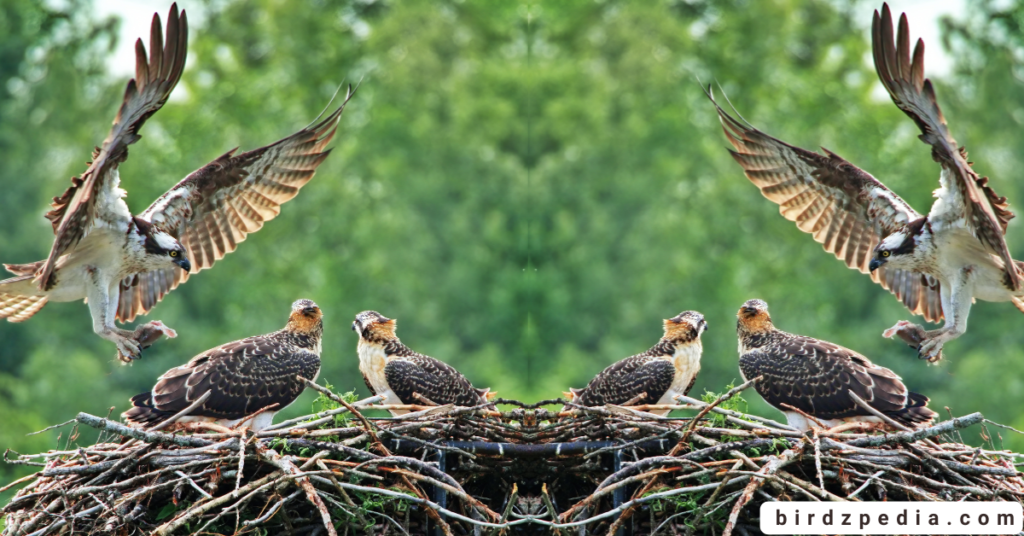Black Eagle[Ictinaetus malaiensis] Digging Deeper into their World
Scientific Classification
| Kingdom | Phylum | Class | Order | Family | Genus | Species |
|---|---|---|---|---|---|---|
| Animalia | Chordata | Aves | Accipitriformes | Accipitridae | Ictinaetus | Ictinaetus malaiensis |
Black Eagle
Black Eagle is a large but slender bird with a wingspan of 148 to 182 cm (4 ft 10 in to 6 ft 0 in) and a length of around 75 cm (30 in). Its known weights are only 1,000–1,600 g (2.2–3.5 lb), or about half that of the slightly sympatric mountain hawk–eagle, which has a comparable overall length, despite its hefty appearance

Summary
- Taxonomy:
- Genus: Ictinaetus
- Species: malaiensis
- Family: Accipitridae (eagles and hawks)
- Habitat:
- Found in hilly parts of tropical and subtropical South and Southeast Asia, as well as southeast China.
- Behavior:
- Predatory bird with a preference for soaring over forests.
- Feeds on birds and mammals, particularly during nesting periods.
- Physical Characteristics:
- Distinctive profile: Look for a unique silhouette.
- Leisurely flying: Characteristic flight behavior.
- Widely spread, long primary “fingers”: Refers to the eagle’s wing structure.
- Yellow ceres: The fleshy, waxy skin at the base of the beak.
- Yellow legs: Stand out against the bird’s dark feathers.
- Identification:
- Recognizable by the combination of distinctive features such as profile, flight style, wing structure, yellow ceres, and legs.
- Geographical Range:
- Found in the hilly regions of tropical and subtropical South and Southeast Asia, as well as southeast China.
- Social Behavior:
- Typically solitary, with observations of individuals soaring alone.
- Ecological Role:
- Plays a crucial role in the ecosystem by controlling populations of birds and mammals through predation.
- Conservation Status:
- Conservation status may vary; consider checking the latest data for information on the Black Eagle’s conservation status.

Taxonomy and systematics
The species name is spelled malayensis in most publications, but Temminck used the spelling malaiensis in his description. This finding from a 2011 analysis of some original publication covers led taxonomists to apply the principle of priority and reject any subsequent spelling emendations.

Description
It is among the largest eagles in its area. Adults have yellow feet at the base of their bill (cere), and their feathers are completely black. The wings have a characteristic shape because they are long and pinched in at the innermost primaries. The top tail coverings are paler and the tail has some barring.
- The tips of the wings extend to the tip of the tail when perched.
- When in flight, the wings are kept in a shallow V, with the wings slightly above the horizontal plane.
- This bird is often spotted scouring the treetops for a nest to plunder on hot afternoons.
- It can be identified by its jet black appearance, size, and characteristic slow flying, which happens sometimes just above the canopy.
- The sexes of juvenile birds are similar, despite having buff heads, underparts, and underwing coverts.
- This species can be distinguished from Nisaetus cirrhatus, the dark-colored variation of the changeable hawk-eagle, by its wing shape.
- Unlike other prey-seeking birds, it has fully feathered tarsi and relatively short toes with long claws, especially on the inner toe, that are not as highly curled.

Distribution
The Asian tropical and subtropical regions are home to a large range of that eagles. Race perniger (Hodgson, 1836) is found in the woods of the Eastern and Western Ghats in peninsular India, Sri Lanka, and the Himalayan foothills to the west via Nepal into the Indian states of Himachal Pradesh and Jammu & Kashmir.
Gujarat is the bird’s westernmost range. The Aravalli range in northwest India is also home to the species. The nominate race, Malaiensis (Temminck, 1822), is distributed throughout Southeast Asia, Taiwan, and southern China (Yunnan, Fujian).
Habitat
They typically inhabit woods, particularly those that are evergreen or rise to a height of 3,300 meters above sea level. In hilly or wild terrain, they can benefit from updrafts and thermals to help with flying and hunting. These eagles inhabit both primary and secondary woods, and their preference for isolated,
pristine forests is well established. They are able to adapt to a wide range of environments, including lowland forests and montane forests. They are well known for their soaring flight and skill as aviators as they search for food. The existence of huge trees for nesting and suitable prey influences their choice of habitat.

Behavior
The striking Ictinaetus malaiensis is a predator with distinct habits. This bird, which is known for having incredible flying abilities, is commonly spotted using thermals to hunt for food. The wingspan of a Ictinaetus malaiensis can extend to over six feet, And it soars with incredible grace and agility. Given its
threatening appearance, this species eats a wide range of animals, birds, and reptiles. It is primarily a lone hunter. The black eagle is recognized for possessing excellent vision.
Breeding
| Category | Value |
|---|---|
| Monogamy | Yes |
| Reproduction Season | January-April |
| Incubation Period (days) | 35-40 |
| Baby Name | Eaglet |
| Clutch Size | 1-2 eggs |
These birds build a three to four foot wide platform nest in forested hills and mountains, which they utilize to raise their young. The nest site may be used the following year. Breeding season normally occurs during the dry months
when food sources are abundant and thermals allow them to soar into the air. Large nests are constructed by bird by using sticks and branches, and they are usually found high in the canopies of enormous trees. The female lays one egg, and both parents actively engage in the incubation phase,
alternately protecting and fostering the egg’s healthy development. Following hatching, the chick’s parents become its loving guardians, providing it with food.Black eagles are committed to the survival of their species, as seen by their nesting practices.

Food and Feeding
As a carnivorous raptor, the Ictinaetus malaiensis feeds on small to medium-sized animals, birds, eggs, and sometimes reptiles. Bats, squirrels, and other similar animals are examples of small mammals. use its abilities to glide and fly.
This common nest-predator can be identified by its relaxed flying style, which takes place somewhat above the canopy. Its wide mouth and curved claws allow it to gather swiftlet eggs from caves and bird eggs from nests. Like swallow-tailed kites, they have the peculiar habit of carrying an entire nest—
including nestlings—to a feeding perch. Macaques, squirrels, and a variety of bird species alert people when they spot these birds soaring over the jungle. This species may also consume baby bonnet macaques, since they have been observed to feed on Indian giant squirrels.
Calls and songs
The bird emits the high-pitched cry known as “wee-a-kwek.” “Kheeee Kheeee Kheeee,” which is most frequently heard during courtship displays, is the most common cry. It is repetitive, harsh, and raspy. The scream patterns and tones of this bird can vary among populations and individuals.

Threats
This bird is at risk due to deforestation throughout its habitat. Although it is widespread in its range, it is uncommon rather than threatened. Because to heavy extraction, which has reduced the amount of woody regions, its former range has decreased.

Relationships to Humans
Eagles, especially the Ictinaetus malaiensis , may have cultural or symbolic meaning in many groups. But this differs greatly throughout various communities. Due to its dark appearance and preference for living in wooded places, the Soliga people named this eagle Kaana Kattale.
It was called a “bird that never sat down” by the Lepcha people of India’s Darjeeling area because it could stay in the air for long periods of time with little effort.
Common Names in Different Languages
| Language | Common Name |
|---|---|
| English | Black Eagle |
| French | Aigle Noir |
| Spanish | Águila Negra |
| German | Schwarzer Adler |
| Italian | Aquila Nera |
| Portuguese | Águia Negra |
| Dutch | Zwarte Arend |
| Russian | Чёрный орёл (Chyorny oryol) |
| Chinese (Mandarin) | 黑雕 (Hēi diāo) |
| Japanese | ブラックイーグル (Burakku īguru) |
| Hindi | काला ईगल (Kālā īgal) |
| Swahili | Tai Mweusi |
| Arabic | نسر أسود (Nasr Aswad) |
FAQs
1. What is the Black Eagle?
Ictinaetus malaiensis is a large bird of prey belonging to the family Accipitridae. It is known for its striking black plumage and powerful build.
2. Where are they found?
They are found in various regions of Asia, including the Indian subcontinent, Southeast Asia, and parts of the Indonesian archipelago. They inhabit forests, wooded hills, and mountainous terrain.
3. What does they eat?
Itis a carnivorous bird that primarily feeds on mammals, birds, and reptiles. Their diet includes monkeys, small deer, birds, and sometimes snakes.
4. How large is the Ictinaetus malaiensis ?
Adult are relatively large birds with a wingspan of about 150 to 190 cm (59 to 75 inches). They have a robust build, and females are generally larger than males.
5. What is the lifespan of a Ictinaetus malaiensis ?
In the wild, Black Eagles can live up to 30 years. However, their lifespan may vary based on factors such as food availability, environmental conditions, and human impact.
6. Are they endangered?
The conservation status of Ictinaetus malaiensis varies across their range. While they are not currently classified as globally threatened, certain populations may face local threats due to habitat loss, deforestation, and human disturbance.
7. Do they migrate?
They are generally non-migratory birds. They tend to establish territories and stay within a specific range throughout the year.
8. How do Ictinaetus malaiensis reproduce?
They build large nests in tall trees, and the female typically lays one to two eggs. Both parents share the responsibility of incubating the eggs and caring for the chicks.
9. Are It is solitary birds?
They are often observed alone or in pairs, especially during the breeding season. However, they may be seen in small family groups when raising their young.
10. Can Ictinaetus malaiensis be kept as pets?
Owning a Ictinaetus malaiensis as a pet is not recommended or legal in many places. These birds are wild and have specific habitat and dietary requirements that are challenging to meet in a domestic setting.
11. What are the main threats to them?
The main threats to them include habitat destruction, deforestation, and human activities such as hunting and trapping. Conservation efforts focus on protecting their natural habitats and raising awareness about the importance of these majestic birds.


![Black Stork [Ciconia nigra] Haven: Wings, Nature, and Conservation](https://birdzpedia.com/wp-content/uploads/2023/12/African-Openbill-7-768x402.png)


![Pelagic cormorant: [Urile pelagicus] Odyssey Habitat, and Overview](https://birdzpedia.com/wp-content/uploads/2024/01/Channel-Billed-Toucan-1-768x402.png)
![AFRICAN OPENBILL[Anastomus lamelligerus]: Stork Species, Habitat, and Behaviors](https://birdzpedia.com/wp-content/uploads/2023/12/AFRICAN-OPENBILL-Anastomus-lamelligerus-Facts-Habitat-1-1-768x402.png)
